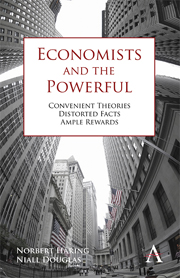Chapter 5 - Power at Work
Published online by Cambridge University Press: 05 February 2013
Summary
Workmen are disposed to combine in order to raise, masters in order to lower the wages of labour. The masters upon these occasions never cease to call aloud for the assistance of the civil magistrate, and the rigorous execution of those laws which have been enacted with so much severity against the combination of servants, labourers, and journeymen.
—Adam Smith, 1776Tire manufacturer Bridgestone had to learn the hard way how dangerous it can be to follow the teachings of neoclassical labor market theory. Dozens of people died as a consequence of faulty Bridgestone tires on Ford Explorer SUVs (sports utility vehicles). The value of the company dropped by billions of dollars due to victim compensation, a ruined reputation and the recall of millions of tires. Management had unilaterally imposed large pay cuts and an unpopular new 12-hour plan of shifts rotating from day to night. In response, the United Rubber Workers of America had called a strike in the Illinois plant of the company. For a period of about three years, the union was either on strike or working without a contract. During that time, the company employed about 1,000 replacement workers. After a year, the union unconditionally offered to return to work without a contract, but management announced that it would permanently retain the replacement workers and offered to recall the striking workers only as needed. Only in December 1996 was a contract settled that included provisions to recall all strikers (Krueger and Mas 2004).
- Type
- Chapter
- Information
- Economists and the PowerfulConvenient Theories, Distorted Facts, Ample Rewards, pp. 163 - 206Publisher: Anthem PressPrint publication year: 2012



